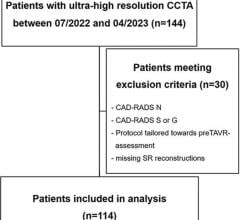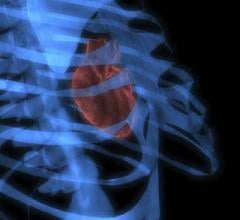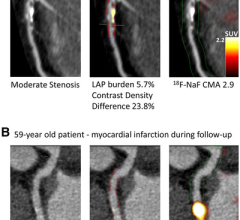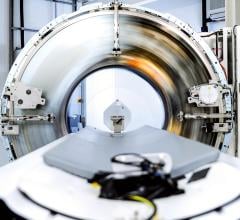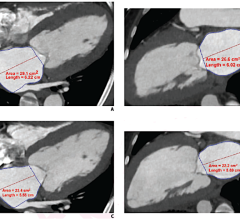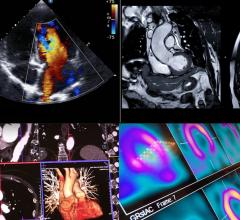July 18, 2007 - An analysis based on computerized simulation models suggests that the lifetime risk of cancer associated with radiation exposure from a computed tomography (CT scan) coronary angiography varies widely, with the risk greater for women and younger patients, according to a study in the July 18 issue of JAMA. Coronary artery disease (CAD) is the leading cause of death in men and women in the United States, accounting for 1 in 5 deaths, and a major cause of healthcare expenditures, with annual costs estimated at $142 billion, according to background information in the article. Attempts to improve the diagnosis of this disease has led to the development of noninvasive methods for CAD diagnosis, including the 64-slice computed tomography coronary angiography (CTCA; combines multiple X-ray images with the aid of a computer to produce cross-sectional views of the heart and coronary arteries). It has been predicted that CTCA may emerge as the diagnostic test of choice for patients with intermediate pretest probability of disease, yet there are little data on its associated cancer risk from exposure to radiation. Andrew J. Einstein, M.D., Ph.D., of the Columbia University College of Physicians and Surgeons, New York, and colleagues conducted a study to estimate the lifetime attributable risk (LAR) of cancer incidence associated with radiation exposure from a 64-slice CTCA, and to determine how this risk is influenced by patient age, sex and scan protocol. The recent Biological Effects of Ionizing Radiation (BEIR) VII Phase 2 report provides a framework for estimating LAR of cancer incidence associated with radiation exposure from a CTCA by using a computational model and integrating the most current data available on health effects of radiation. Lifetime cancer risk estimates for standard cardiac scans varied from 1 in 143 for a 20-year-old woman to 1 in 3,261 for an 80-year-old man. Use of simulated electrocardiographically controlled tube current modulation (ECTCM; a dose reduction strategy that reduces radiation during part of the cardiac cycle) decreased these risk estimates to 1 in 219 and 1 in 5,017, respectively. Estimated cancer risks using ECTCM for a 60-year-old woman and a 60-year-old man were 1 in 715 and 1 in 1,911, respectively. A combined scan of the heart and aorta had higher LARs, up to 1 in 114 for a 20-year-old woman. The highest organ LARs were for lung cancer and, in younger women, breast cancer. "In this study, we observed a marked variation by age, sex and scan protocol for cancer risk associated with radiation exposure from CTCA," the authors write. "The results of this study suggest that CTCA should be used particularly cautiously in the evaluation of young individuals, especially women, for whom alternative diagnostic modalities that do not involve the use of ionizing radiation should be considered, such as stress electrocardiography, echocardiography or magnetic resonance imaging. If CTCA is considered as an alternative to invasive coronary angiography, the risks and benefits of each test require consideration." Source: (JAMA. 2007;298(3):317-323. Available pre-embargo to the media at www.jamamedia.org) For more information: www.pubs.ama-assn.org/
If you enjoy this content, please share it with a colleague
Related Content
Computed Tomography (CT) continues to be a rapidly evolving technology with many new advancements, as displayed and ...
February 20, 2024 — Ultrahigh-spatial-resolution photon-counting detector CT improved assessment of coronary artery ...
August 2, 2022 – A new update has been announced as the radiology world continues to address supply disruptions of ...
July 29, 2022 — Siemens Healthineers has announced the Food and Drug Administration (FDA) clearance of the ARTIS icono ...
July 8, 2022 — The Society of Cardiovascular Computed Tomography (SCCT) has released a new expert consensus document on ...
January 12, 2022 — By combining information from two advanced imaging techniques with clinical data, physicians can ...
The U.S. Food and Drug Administration (FDA) cleared the world's first photon-counting computed tomography (CT) scanner ...
October 14, 2021 — Cardiac computed tomography angiography (CTA) derived left atrium emptying fraction (LAEF) improves ...
September 27, 2021 — Zebra Medical Vision, the deep-learning medical imaging analytics company, announces its eighth U.S ...
September 22, 2021 — Test selection should be a shared decision between patient and physician rather than directed by ...


 March 07, 2024
March 07, 2024 
